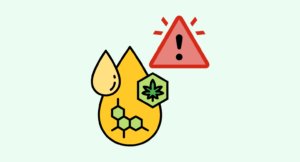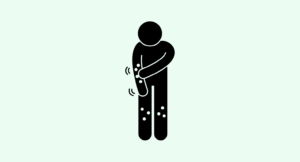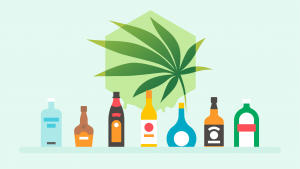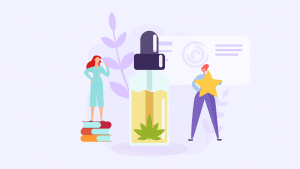Evidence based
What Are The Side Effects of CBD?
Learn about the risks of using CBD.
Is CBD safe? Has it been tested on humans? What are the side effects?
The WHO released a report on CBD in 2018 that concluded by stating, “CBD is generally well tolerated with a good safety profile.”
In the bureaucratic language of the WHO — this essentially means there’s a lot of evidence to suggest CBD is safe, and that the side effects are mild and manageable.
Despite having an excellent safety profile, there’s still some potential for side effects and few cases where CBD supplements should be avoided altogether.
In this article, we’ll cover the potential side effects of CBD in detail — including both the long-term and short-term side effects.
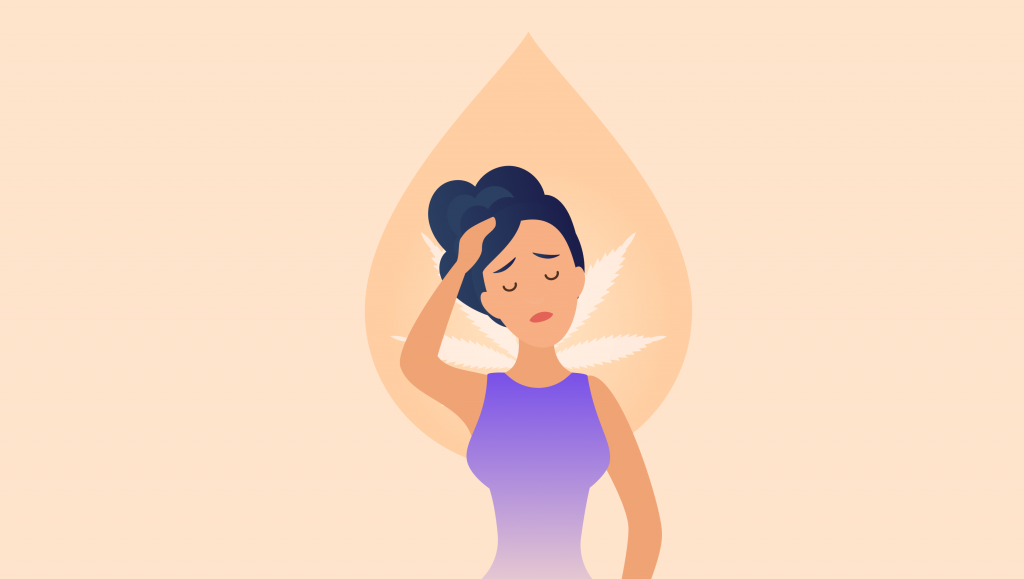
Does CBD Have Any Side Effects?
The short answer to this question is yes.
Although CBD (cannabidiol) has been proven time and time again to be inherently safe — nothing is entirely without side effects. Any health supplement or medication that causes a physiological change in the body has the potential to cause side effects.
CBD has many effects on the human body — which means it’s totally possible that some of these changes will be undesired.
These undesirable effects are what we refer to as a side effects.
With that said, the side effects of CBD tend to be very mild. Issues with side effects from CBD most often come from high doses of CBD, combining CBD with other medications, or using CBD alongside other underlying health conditions [1].
What Are The Side Effects of CBD?
There are five main side effects you may experience when using CBD — low blood pressure, dry mouth, diarrhea, loss of appetite, and tiredness.
Each of these side effects is considered a short-term side effect — which means it only lasts as long as CBD remains in the body. These symptoms will disappear as the CBD wears off.
There are a few CBD-based pharmaceutical preparations on the market, such as Epidolex and Sativex — each of which has had a ton of research done to assess the potential for side effects. This research has given us a lot more insight into the potential adverse effects of CBD and other related cannabinoids.
The side effects of CBD can be broken up into two categories — short-term and long-term. Let’s cover each in more detail.
Short-term Side Effects of CBD
Short-term side effects happen right away as the CBD begins to take effect. They can last anywhere from a few minutes to a few hours. Once the CBD wears off, the side effects usually wear off along with it.
Short-Term Side Effects of CBD May Include:
- Low blood pressure (defined as blood pressure below 110/80 mm Hg)
- Dry mouth (Xerostomia)
- Fatigue
- Diarrhea
- Poor appetite
- Nausea and vomiting
- Skin rash
Long-Term Side Effects of CBD
Long-term side effects don’t appear right away. These side effects develop gradually over time with consistent use. There are very few long-term side effects reported from CBD, and many of these effects can be traced back to other aspects of CBD use instead — such as smoking, vaping, or combining CBD with pharmaceutical medications.
Long-Term Side Effects of CBD May Include:
- Changes in weight (loss or gain)
- Frequent infections (low immunity)
- Abnormal liver function tests (high AST or ALT)
- Feeling weak or tired
Is CBD Safe?
There’s a wealth of research available in the scientific literature that explores the safety profile of CBD — I dug into it to see what I could find.
This research is critical in order for further testing can take place to explore the practical and medicinal applications of the compound in humans. Researchers can’t test CBD on health conditions such as epilepsy before it can be proven safe.
Let’s cover some of the most important safety research involving CBD:
Study #1 — A Meta-Analysis on 132 Different Studies
Study: Safety and Side Effects of Cannabidiol, a Cannabis sativa Constituent
This review looked at 132 research papers that assessed the safety and tolerability of CBD. These studies included in vitro research, animal testing, and human clinical trials.
The study concluded that CBD is well tolerated and safe in humans, even in high doses over long periods. Researchers made note that there was potential for adverse side effects if CBD was used in combination with other medications or underlying health conditions [1].
Study #2 — Animal Testing on CBD Safety
This review seeks to build off the research published by Bergamaschi et al., 2011. The results of the study confirmed the initial conclusion for the first review, highlighting CBD as a safe and effective compound for the vast majority of patients.
This study reported the most common side effects to be fatigue, diarrhea, and changes in appetite/weight. Researchers also noted CBD to be significantly better-tolerated than other medications used for similar purposes [3].
Study #3: Long-Term Safety of CBD & THC
Study: An Open-Label Extension Study to Investigate the Long-Term Safety and Tolerability of THC/CBD…
This study examined the long-term health effects of CBD and THC.
Preparations of the two cannabinoids were given to 43 cancer patients every day for two weeks. Researchers of this study reported there to be minimal side effects and concluded that the preparation was “well-tolerated” [4].

Study #4 — Safety of CBD With Dravet’s Syndrome (Epilepsy)
Study: Randomized, dose-ranging safety trial of cannabidiol in Dravet syndrome
This randomized clinical trial looked at the effects of CBD in the treatment of a rare form of epilepsy known as Dravet syndrome over 13 weeks.
34 patients diagnosed with Dravet syndrome (aged 4 to 10) were randomized into four treatment groups — 5 mg/kg, 10 mg/kg, 20 mg/kg CBD, and an inactive placebo control.
The study concluded by stating that CBD was well-tolerated by the majority of patients (94% completion rate), and safety findings were consistent with other research. Some patients were noted to have elevated ALT or AST (indicating changes in liver function), but these elevations disappeared once CBD was discontinued.
This is one of the best studies we have so far on the safety of CBD in children, especially since the doses used in the study were significantly higher than the standard dose of CBD [5].
What Causes The Side Effects of CBD?
CBD has a long list of effects on humans. It works by binding or modulating various receptors in the body. These receptors control other chemical, cellular, and organ functions. This interaction with receptors is what gives CBD its benefits as well as some of its side effects.
There are other ways CBD may lead to side effects as well — some of which come down to the way CBD was consumed, how much CBD was used, what other medications were taken alongside CBD, underlying health issues, and the presence of contaminants in the CBD extract itself.
Let’s cover each of these potential causes in more detail and what you can do to minimize your chances of experiencing side effects from each one.

1. Smoke or Vapor Inhalation
Different forms of CBD can bring unique side effects. For example, smoking, dabbing, or vaping CBD may lead to short-term side effects caused by the inhalation of compounds through the lungs rather than from the CBD itself.
When smoke is inhaled it causes damage to the lungs along with an increase in carbon dioxide and carbon monoxide in the blood. This can lead to side effects like coughing, sore throat, fatigue, and nausea.
There have also been some recent reports of a condition known as lipoid pneumonia, which can be life-threatening. This condition is caused by inhaling fatty compounds into the lungs — such as with vape oils or e-liquids. This condition is rare but can happen from any e-liquids, including CBD-infused vape oils.
How To Minimize Your Risk
The easiest way to minimize the chances of experiencing side effects from smoke or vape inhalation is to use CBD orally (CBD oils, CBD capsules, CBD edibles) or topically instead.
There are a ton of excellent CBD products available that don’t rely on smoking or vaping to deliver CBD into the body. This saves your lungs and keeps harmful compounds like carbon monoxide out of your bloodstream.
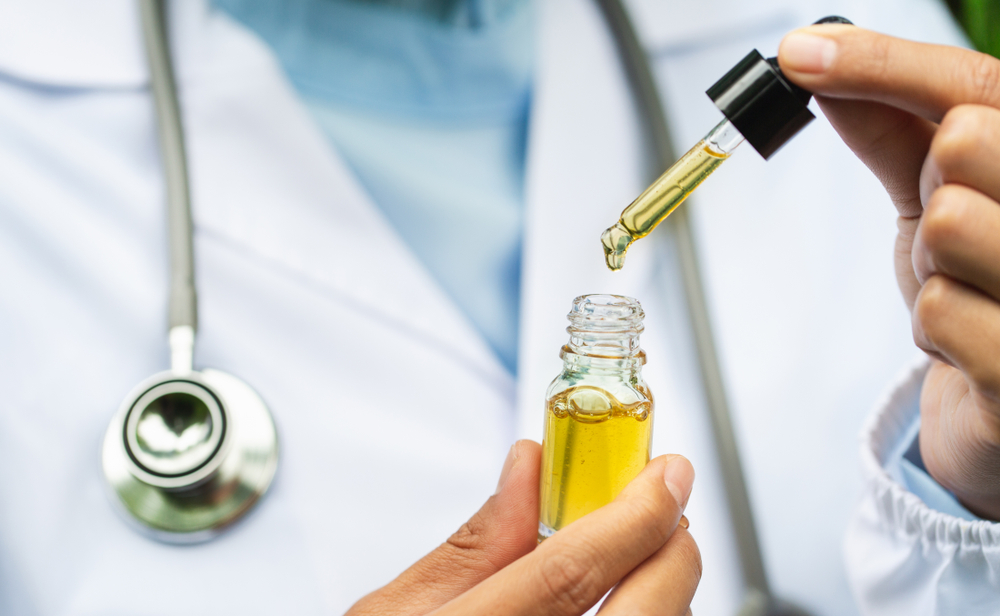
2. High Doses of CBD
The more CBD you take, the stronger the effects.
This is true for both the positive and negative effects of CBD. Several of the research papers cited above used large doses of CBD (up to 20 mg/kg), which is significantly higher than the standard dose of CBD. However, despite remaining safe at these doses, the larger the dosage of CBD, the more chances there will be side effects.
Learn more about how much CBD you should take.
How To Minimize Your Risk
If you’ve never used CBD before, it’s important you understand how to find the best dose for your body individually. The effective dose of CBD is different for everybody, so you have to use some trial and error to find what works for you.
Most people do this by starting with a low dose and building up slowly over time. Once you reach the desired level of effects, you’ve found your dose.
Some people will continue increasing the dose gradually until they experience some mild side effects, then dial the dose back to the last dose that didn’t produce any side effects and stay here — this is what’s considered the maximum tolerated dose — or the highest dose you can take before experiencing negative effects.
You may want to avoid using exceptionally strong CBD oils if you’re just starting out with CBD as well. It’s easier to take too much when using very strong oils.

3. Interactions Between CBD & Other Medications
Whenever you take medications or supplements, you have to consider how the active compounds interact inside the body. Even if you take them separately, they end up mixing in the digestive tract or bloodstream.
CBD rarely interacts with other medications — but there are a few exceptions. CBD may cause the effects of the drug to become stronger or weaker than intended — which could lead to side effects from the medication.
How To Minimize Your Risk
CBD can interact with medications in many different ways. Even drugs that seem to be utterly unrelated to the effects of CBD can result in a negative interaction because of how the liver or kidneys process various medications. If CBD and the medication both compete for the same pathway of metabolism or elimination, it can lead to a buildup of both in the system — ultimately leading to side effects.
Because of this, you must speak with your doctor first about using CBD if you’re taking any medications. Your doctor will give you more accurate advice on whether or not CBD is likely to interact with any medications you’re taking — and what you can do to reduce your chances of developing side effects.

4. Underlying Health Issues
CBD is well-known to offer benefits to specific health conditions. There’s a lot of research on how this compound offers benefits towards diseases such as epilepsy, multiple sclerosis, cancer, arthritis, and more — however, some people may experience a worsening of symptoms after using CBD for their health disorder.
Some examples of this may include Parkinson’s disease, anorexia, and hypotension (low blood pressure).
Liver conditions can also increase your odds of experiencing side effects.
Most of the compounds you take into the body need to be processed and metabolized by the liver before they can be removed from the body. If the liver is compromised for any reason, CBD and its metabolites can build up in the bloodstream — which can ultimately lead to side effects.
Hypotension (low blood pressure) is one of the most concerning health issues people should be aware of before using this supplement.
Cannabidiol can cause a reduction in blood pressure. For many people, this is one of the major benefits — however, if blood pressure is already too low, this effect can push blood pressure below safe levels. If this happens, the heart may be unable to pump enough blood into the brain, leading to lightheadedness, confusion, and fainting.
How To Minimize Your Risk
The best way to avoid side effects if you have an underlying health issue is to speak with your doctor directly before using CBD.
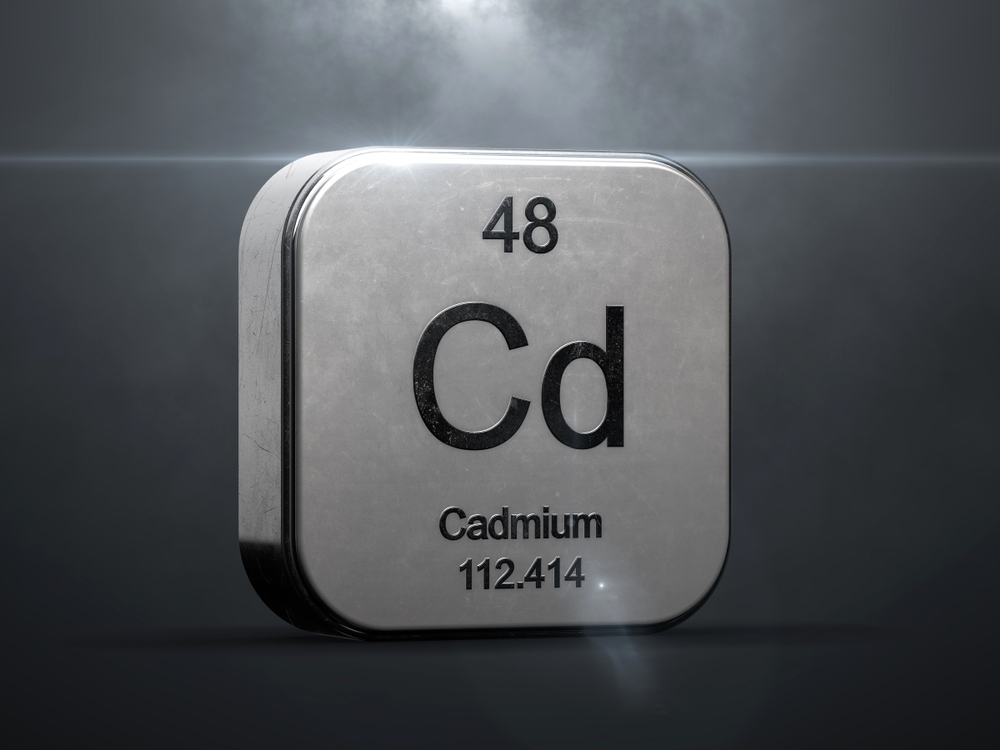
5. Low-Quality or Contaminated CBD Products
The source of CBD matters when discussing side effects. CBD oil can become contaminated during the cultivation or manufacturing process. These contaminants may lead to both short-term and long-term side effects — some can even be quite severe.
This is why we encourage people to only order CBD products from companies that publish independent lab analyses for each batch of products they produce.
These tests should look for all the main contaminants of CBD products, including:
- Heavy metals
- Pesticides
- Organic solvents (like propane, butane, or hexane)
- Microbial contaminants (mycotoxins, bacteria, mold)
- Psychoactive cannabinoids (THC or THCV)
- Synthetic cannabinoids
Contaminated CBD products aren’t uncommon, so it’s important you look for a reputable supplier before placing your order. CBD oils that are significantly cheaper than the competition are most likely too good to be true.
Many of these oils are made from cheap hemp cultivated in places like China or India where soil contamination is common — leading to the accumulation of heavy metals or other harmful compounds in the final product.
Contaminants can lead to side effects such as:
- Headaches
- Allergic reactions
- Skin rashes
- Memory loss
- Confusion
- Nausea/vomiting
- Vision loss
Some low-quality CBD oils may also contain the psychoactive cannabinoid, THC. If the THC content is high enough, it will lead to undesirable side effects as well — essentially causing the same effects of marijuana that make users high.
How To Minimize Your Risk
Always purchase your CBD from a reputable manufacturer that offers clear evidence that each batch of product they produce is completely free from these contaminants. There’s no safe dose of heavy metals, pesticides, or organic solvents, so it’s critical the tests show no trace of these compounds.
If a company can’t or won’t provide this information, we suggest you look elsewhere.

6. Allergic Reactions
Some side effects are purely the result of allergies. This may be an allergy to the CBD itself, other cannabinoids, or additives such as oils, synthetic flavoring, or vape fluids.
Allergies are driven by the immune system, which is continuously monitoring the body to identify and destroy anything that poses a threat. Sometimes the immune system mistakes a harmless compound as a threat — leading to what we call an allergic reaction.
When a threat is discovered (even if by mistake), the immune system immediately mobilizes a fleet of white blood cells and chemical messengers to the area to fight off the invader. This can lead to side effects including skin rashes, swelling, tightness in the throat, or much more severe effects like a closing of the airway, tachycardia (excessive heart rate), elevated blood pressure, and loss of consciousness.
Most allergies to CBD products are triggered by chemical additives from synthetic flavorings or preservatives rather than to the CBD itself.
How To Minimize Your Risk
Allergies can be hard to prevent and even harder to predict. For this reason, it’s wise to test a small amount of a supplement or topical before using the full amount to see if there’s any reaction to it.
For topicals, apply a small amount to the skin and wait for about 30 – 45 minutes to see if any rash or irritation appears. If not, you’re probably safe to apply the topical to a larger area of the body.
For edibles, the process is similar. Start by taking a tiny amount. Hold it in your mouth for a moment, if you can. Wait for 30 – 45 minutes to give the immune system time to react. If you don’t experience any side effects (most commonly, swelling or itchiness), you can safely take a larger dose.
What Can I Do If I Experience Side Effects From CBD?
What happens if you start to experience side effects from CBD? When should you be concerned?
The vast majority of side effects from CBD are mild in nature — meaning that although you might feel uncomfortable, the side effects will soon pass on their own. Depending on which side effects you’re experiencing, there may be some steps you can take to help them go away much faster.
1. Dry Mouth (Cottonmouth)
The best way to eliminate cottonmouth from CBD is to drink something fruity like orange or pineapple juice, sip water, or chew gum. If you remain well-hydrated before using CBD, the chances of experiencing this side effect are reduced.
2. Lightheadedness
This side effect is pretty common and usually doesn’t mean anything serious. However, lightheadedness can also signal a deeper underlying problem. The cause of this is typically low blood pressure, so it’s best if you can either sit or lie down for a while. This will allow the blood to flow easily into the brain. It also helps to drink something with electrolytes in it to help stabilize your blood pressure before you take CBD.
If you experience any loss of consciousness or feel excessive lightheadedness, stop using CBD immediately and set up a visit with your doctor to discuss your symptoms.
3. Diarrhea
This side effect is hard to stop once it’s begun. You can take medications to help, but by the time the drugs take effect, the side effects will likely have worn off anyway.
It helps to take CBD along with food to minimize the chances of diarrhea.
If diarrhea continues to occur, it’s wise to speak with your doctor before using CBD again.
4. Fatigue or Tiredness
Feeling tired after using CBD is often a goal for using the supplement, especially in people who have a hard time sleeping. However, not everyone wants this effect from CBD. The easiest way to avoid this is to take CBD alongside caffeine to counteract the sedative effects of the compound.
5. Poor Appetite
CBD can lower our appetite — and while this is usually not a significant problem, it can cause you to go undernourished for long periods if you use CBD frequently. This could lead to nutritional deficiencies, weakness, irritability, and weight loss. It can help to take CBD along with a meal to avoid this effect.
Do Other Cannabinoids Have Side-Effects?
CBD isn’t the only cannabinoid in the cannabis plant. There are over one hundred other cannabinoids also produced in the plant — many of which end up in your CBD oil. This is especially the case for full-spectrum hemp extracts.
So, do any of these other cannabinoids have side effects you should be concerned about?
Overall, the side effects of these other cannabinoids are very similar to the side effects of CBD, with some subtle differences.
1. Side Effects of THC
THC (tetrahydrocannabinol) is the primary psychoactive cannabinoid in cannabis plants. Hemp products have very low levels of THC in them in order to stay within the legal limit and to prevent any psychoactive side effects.
Products that have high THC content (over 2%) may produce side effects related to the psychoactivity of THC.
There is more than one type of THC. The most common is delta 9 THC but there’s also delta 7 THC, delta 8 THC, delta 10 THC, THCP, THCC, and more.
Full-spectrum CBD oils contain trace amounts of delta 9 THC.
Here are some of the most common side effects of THC:
- Visual disturbances
- Increased appetite
- Dry mouth
- Paranoia
- Lightheadedness
- Headache
- Fatigue
- Changes in emotion and mood
2. Side Effects of THCV
THCV stands for tetrahydrocannabivarin. It’s closely related to THC, but has significantly less psychoactivity and is found in much lower concentrations in cannabis plants. This cannabinoid is unlikely to cause any real side effects in CBD products simply because of how low the concentration is.
Here are some potential side effects of THCV:
- Visual disturbances
- Paranoia
- Nausea and vomiting
- Changes in mood
- Fatigue
3. Side Effects of CBC
CBC stands for cannabichromene — it’s the third most predominant cannabinoid next to CBD and THC. Some hemp strains are high in CBC, so it has a greater potential for impacting the side effects of hemp products than most other minor cannabinoids.
The potential side effects of CBC include:
- Dizziness
- Fatigue
- Sedation
- Nausea
- Loss of appetite
4. Side Effects of CBG
CBG stands for cannabigerol — it’s the precursor molecule for both CBD and THC. Therefore, plants that have been harvested too early will have high levels of CBG.
CBG has few side effects and is reported to counteract many of the psychoactive effects of THC.
Side effects of CBG may include:
- Sedation
- Muscle weakness
- Nausea and vomiting
- Lightheadedness
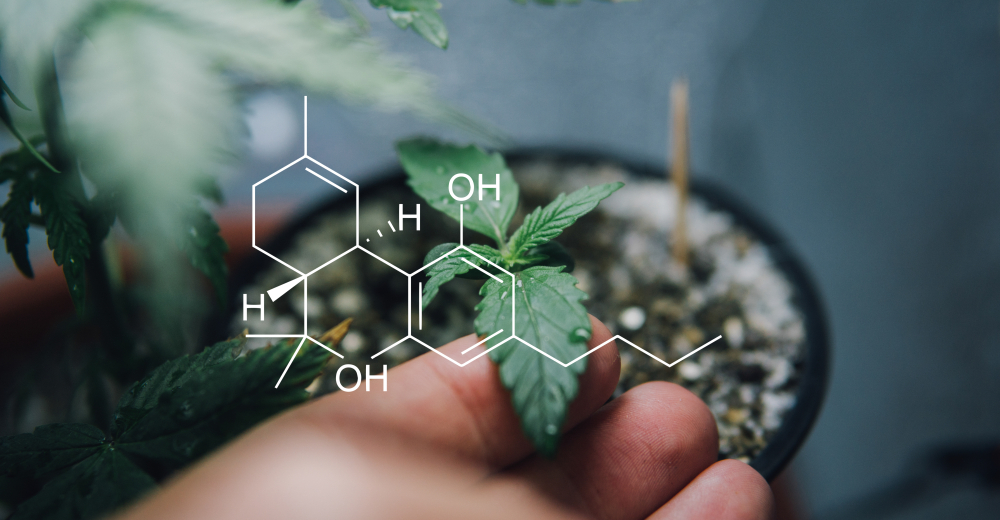
5. Side Effects of CBN
CBN (cannabinol) is on the opposite end of the scale to CBG. Instead of being a precursor, it’s a metabolite of THC. As THC breaks down, CBN levels rise.
This compound is not found in high concentrations in hemp plants because of the lack of THC but will still be present in some capacity — especially in plants that have been harvested late or in full-spectrum CBD oils nearing their expiration date.
CBN is more sedative than most other cannabinoids, so the most common side effects are sedation and fatigue.
The side effects of CBN may include:
- Sedation
- Nausea and vomiting
- Increased appetite
- Poor memory and concentration
Who Should Avoid Using CBD?
Now that we’ve covered all the side effects of CBD and highlighted some of the factors that can make these side effects more frequent or more severe — let’s discuss a few examples where CBD should be avoided altogether.
1. People With Liver Disorders
CBD is metabolized in the liver — along with just about every other medication or supplement we consume. If there’s already a problem with the liver, it will be difficult to metabolize CBD effectively, causing CBD levels (and other medications) to remain elevated for extended periods.
If you suffer from any liver disorders (hepatitis, fatty liver disease, cirrhosis, etc.), it’s wise to speak with your doctor before using CBD.
2. People Trying to Conceive a Child
CBD and other cannabinoids are untested on a growing fetus, and there are many theories that the compound can negatively affect brain development. Therefore, if you’re trying to conceive, it’s wise to avoid the use of CBD supplements.
3. Pregnant or Breastfeeding Mothers
Similar to the point above, CBD should be avoided in expectant or nursing mothers to avoid losing the baby with CBD. Cannabinoids are highly interactive with our central nervous system and may cause problems in the developing infant nervous system.
CBD is a fat-soluble substance and will transfer to the child through breast milk.
4. People Taking Certain Medications (Ask Your Doctor)
Some medications may interact with CBD, as highlighted in several of the safety studies listed earlier. Here are some of the key ways CBD can interact with a drug:
- CBD may increase the effects of medication — this can lead to side effects from the CBD or the medication being too strong
- CBD may prevent the breakdown and excretion of drugs from the body — this can cause compounds to build up to dangerous levels in the bloodstream over time
- CBD may counteract the effects of a medication — this can cause the medicine to become ineffective for addressing the symptoms it’s being used to treat
Certain drugs are more likely to interact with CBD than others — such as antipsychotics, blood thinners, blood pressure medications, and pain medications.
Always speak with your doctor before using CBD if you’re taking any prescription medications.
5. People Suffering from Low Blood Pressure
As mentioned above, CBD may cause a reduction in blood pressure. If you already experience low blood pressure, taking CBD could worsen the problem.
It’s recommended that people who have low blood pressure (hypotension) should avoid using CBD, or use CBD under the supervision and advice of a medical professional.
6. People With Known Allergies to Cannabis Products
If you’ve had allergic reactions to cannabis products in the past, be very careful when trying CBD. Sometimes these allergies are experienced only from smoking the plant or from additives like synthetic flavorings or preservatives — however, in other cases, the allergies are to the cannabinoids or other phytochemicals in the hemp plant.
In cases of severe allergies, such as anaphylaxis, avoid CBD products altogether.
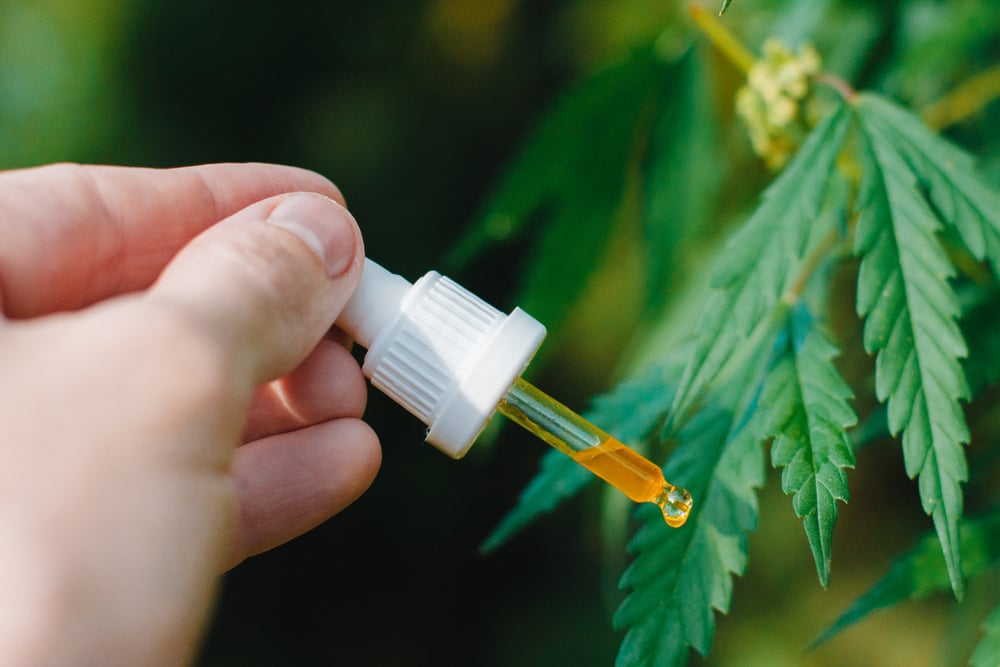
Conclusion: Is CBD Safe?
Everything has the potential to cause side effects — especially compounds that have apparent physiological effects on the body. This includes CBD — which has a long list of effects and benefits.
CBD has been proven to be a safe and effective compound in animal and human clinical trials many times over. The side effects this compound is most likely to cause are very mild in nature — such as dry mouth, mild drops in blood pressure, diarrhea, loss of appetite, and fatigue, or drowsiness.
Most people can avoid these side effects by following some of the advice listed above — such as drinking plenty of water, taking CBD with food, combining other supplements like caffeine, or limiting the dose of CBD.
However, in rare instances, these side effects are more severe. The most severe side effects come from allergic reactions, smoke or vape inhalation, or interactions with other medications and underlying health disorders.
For this reason, it’s wise that you speak with your doctor before using CBD if you have any underlying health issues or are taking any medications. It’s also a good idea to start with a very low dose of CBD (~2 mg) and build the dose up gradually over time once you know how this compound interacts with your body individually.
Have you experienced any side effects from CBD? Leave your comments below!
References
- Machado Bergamaschi, M., Helena Costa Queiroz, R., Waldo Zuardi, A., & Crippa, A. S. (2011). Safety and side effects of cannabidiol, a Cannabis sativa constituent. Current drug safety, 6(4), 237-249.
- Maas, A. I., Murray, G., Henney III, H., Kassem, N., Legrand, V., Mangelus, M., … & Knoller, N. (2006). Efficacy and safety of dexanabinol in severe traumatic brain injury: results of a phase III randomised, placebo-controlled, clinical trial. The Lancet Neurology, 5(1), 38-45.
- Iffland, K., & Grotenhermen, F. (2017). An update on safety and side effects of cannabidiol: a review of clinical data and relevant animal studies. Cannabis and cannabinoid research, 2(1), 139-154.
- Johnson, J. R., Lossignol, D., Burnell-Nugent, M., & Fallon, M. T. (2013). An open-label extension study to investigate the long-term safety and tolerability of THC/CBD oromucosal spray and oromucosal THC spray in patients with terminal cancer-related pain refractory to strong opioid analgesics. Journal of pain and symptom management, 46(2), 207-218.
- Devinsky, O., Patel, A. D., Thiele, E. A., Wong, M. H., Appleton, R., Harden, C. L., … & GWPCARE1 Part A Study Group. (2018). Randomized, dose-ranging safety trial of cannabidiol in Dravet syndrome. Neurology, 90(14), e1204-e1211.
- Johnson, J. R., Burnell-Nugent, M., Lossignol, D., Ganae-Motan, E. D., Potts, R., & Fallon, M. T. (2010). Multicenter, double-blind, randomized, placebo-controlled, parallel-group study of the efficacy, safety, and tolerability of THC: CBD extract and THC extract in patients with intractable cancer-related pain. Journal of pain and symptom management, 39(2), 167-179.
- Blake, D. R., Robson, P., Ho, M., Jubb, R. W., & McCabe, C. S. (2006). Preliminary assessment of the efficacy, tolerability and safety of a cannabis-based medicine (Sativex) in the treatment of pain caused by rheumatoid arthritis. Rheumatology, 45(1), 50-52.


